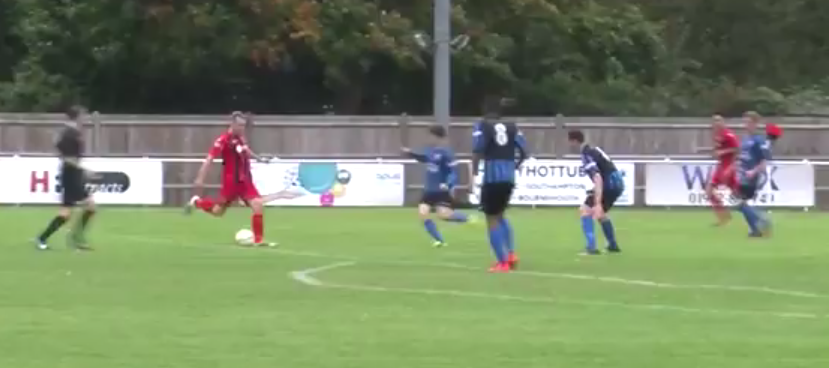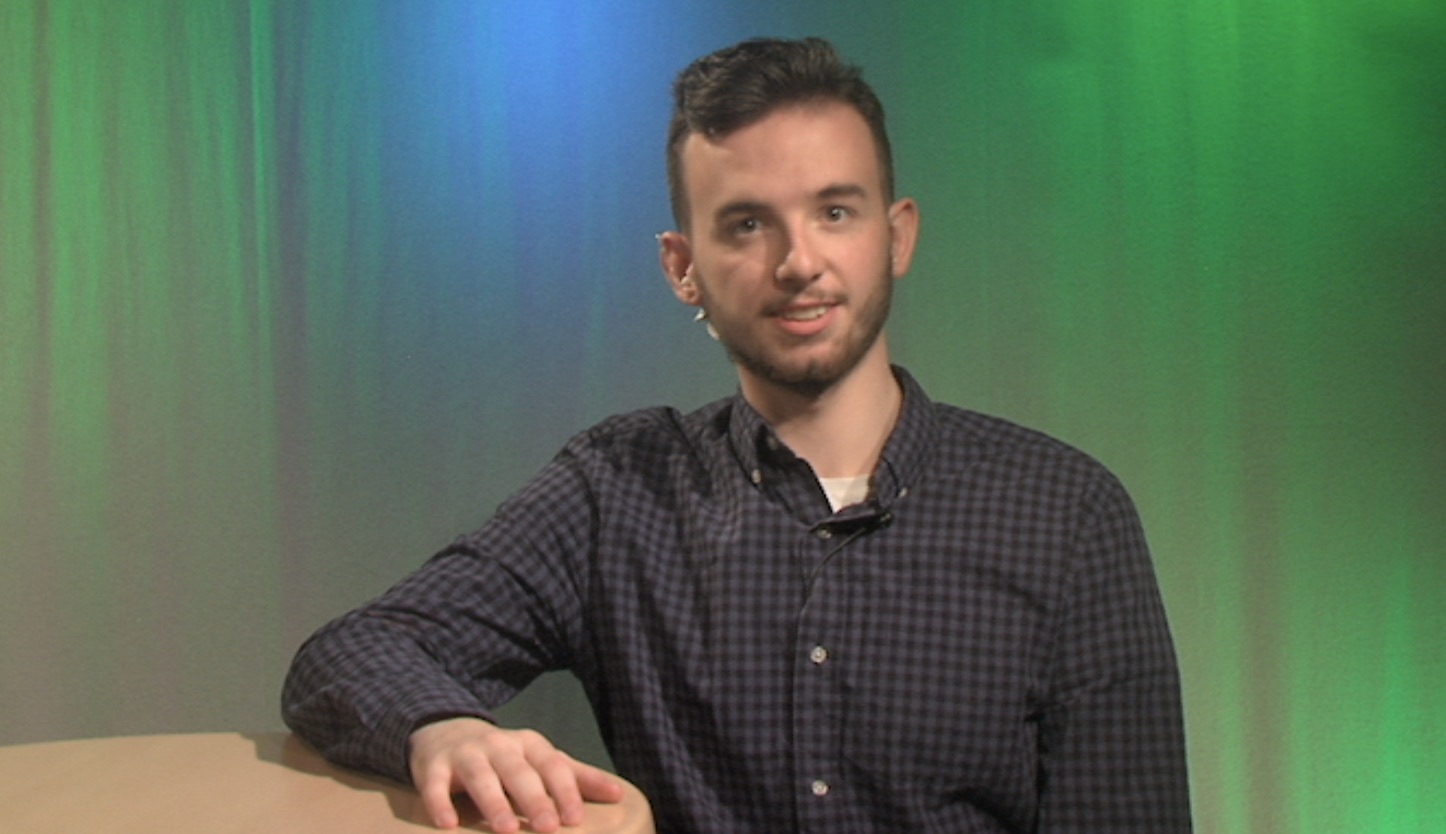Culture
REVIEW: Jesus Christ Superstar at Mayflower Theatre

JESUS CHRIST – SUPERSTAR! Yep I sung it too! At Mayflower Theatre this week, perfectly timed for Easter, is the critically acclaimed ‘Jesus Christ Superstar’ – back from the dead if you will. This revived production started in 2017 with two sold out runs at Regent’s Park Open Air Theatre, before taking over North America (again) with a tour that is still ongoing. This is an updated, slightly modernised version of Andrew Lloyd Webber and Tim Rice’s original concert turned Broadway musical smash-hit, and its not hard to see why it has such raving reviews and accolades. If you’re not aware of the story, you are more than definitely aware of ‘Superstar’s’ title tune (as sung above…); but for those of you unaware, the story takes us through the last few weeks of Jesus Christ’s life, seen through the eyes of Judas.
This production is all about the music! As it was originally written as an album and later turned into a musical production – the new design and direction from Tom Scutt (designer) and Timothy Sheader (director), lends itself perfectly to not only the story but also the music style. A lot of the modernisation comes from the set, design and costume (which we’ll get onto a little bit later), but this particular production of ‘Superstar’ has everything that you’d expect from an Olivier Award winner (Best Musical Revival). The coherence between Drew McOnie’s wonderful choreography, with the new design elements and powerful vocals/instrumentals, all give this musical the ‘Rock-Opera’ vibe. What I particularly liked was the fact that you couldn’t tell that this musical is over 50 years old. Granted this version isn’t 50 years old, but the music and story is – and it felt as if it could’ve been written yesterday. Although they both more than likely took some inspiration from the original, this version of ‘Superstar’ was like the perfect modernised love-child of ‘Les Misérables’ and ‘Hamilton’.
The raw emotion in his performance was stunning.
This cast was superb! Firstly I think I need to mention the ensemble. The energy in dance and movement took this performance to a whole new dimension. Their movements were strong and gave an extra edge to the story by adding physical emotion into the mix. Brilliant from all them! We also HAVE to mention the main man!Playing ‘Jesus’ tonight was understudy, Luke Street. He was phenomenal! His voice had the perfect rock tone and his rendition of ‘Gethsemane’ was flawless. The raw emotion in his performance was stunning. Keeping on the trend of incredible voices, Hannah Richardson as ‘Mary’ was again phenomenal. In particular ‘Everything’s Alright’, which also included Shem Omari James as ‘Judas’, was beautifully sang from all three of them. Shem’s voice also lent itself perfectly to the narrative of the story, like he was singing to the audience and telling them what was happening/what he was thinking. Although he may not be involved for too long, ‘Herod’ played tonight by Timo Tatzber, completely switched up the pace of the musical, and got a huge reception. Overall, this cast clearly has lots of talent and they showcased that – they sparkled out there tonight, and that was way before the glitter! (if you know you know).

When it comes to set and design, as I mentioned earlier – this is really something that has made this production that much better. The set itself is modernistic industrial minimalism, with iron pillars making up the back of the staging where the band sits (will also touch on this later). In the centre of the stage is a cut out crucifix on the backdrop with a grated, giant, three dimensional crucifix on a slant centre stage. This is used as a runway at times, and the levels of the set at the back for characters to run up and down on is very nice in adding layers to what you’re looking at. The little modernised touches of cables and wires being used as bits of symbolism and replacements as restraints was also a nice oxymoron from the story to modern times. The costumes were also on this same line as well. Minimalist and modern but that’s all they needed to be. The lighting was a mixture of minimalist – to rock concert. There was no in-between. I particularly loved the way it looked like the cast would just appear from under the crucifix because of the way the lights were formed. Incredibly effective!
You’re expecting to see a Broadway show, and that’s exactly what you get.
To talk about the music, I don’t think there’s too much that can be said. It’s an album that’s gone gold and platinum, and you can see why. It’s not really surprising coming from the minds of theatre royalty. The live band fronted by Michael Riley smashed it tonight. Live music always adds so much more to musical theatre, and when its basically a rock concert on stage – even better. I also love it when we have actors that can play instruments live on stage. It not only showcases the incredible performers further, but I think in ‘Superstar’s’ case, it pays a nice homage to when this used to just be a touring concert. The same can be said in the way handheld microphones are used – its something new and fresh to see in a current musical. The guitar solos were straight from Slash’s songbook, and there were so many different styles of music – including the sax solo! You can definitely see why this was instantly so popular in the 70s. Rock music was at its high point. To make another similarity to modern day, ‘Hamilton’ has done the exact same thing in todays age. Rock is to ‘Jesus Christ Superstar’, what rap is to ‘Hamilton’.
Overall, the production value of this musical is certainly something that doesn’t disappoint. You’re expecting to see a Broadway show, and that’s exactly what you get. It’s again collaborative between multiple different art forms. By having the band on the stage, they now become a character. I don’t think enough has been said about the dance either. So much is happening, and when the ensemble go from sequenced dance individually to in unison it looks so clean. When they bring out different crucifixes that light up or pour glitter, it again is something very simple that has a very big pay off. A scene that I can recall instantly would be the last supper, because that’s exactly what it represented. If you were to walk in without context to what was going on, you’d know exactly what it was. Extremely clever direction. At the point when Jesus gets crucified I knew what was coming, but I wasn’t prepared for the atmosphere to get as dark as it did. The effect of having him hanging there with a light shining through him, left a silhouette which was exceedingly powerful. The silence that followed this was potentially the longest that I have ever witnessed in a theatre.
From silence to a standing ovation roar, ‘Jesus Christ Superstar’ got exactly what it deserved. I feel like I could talk on and on about this particular production, but what fun is reading about it when you could go and see it yourself? (Which you definitely should do!). I remember I always used to think that this musical was going to be heavily religious which put me off previously. However, if I could just ask you to go and listen to the ‘Overture’ from the album – it may be enough to get you into the theatre like it was with me. ‘Jesus Christ Superstar’ is at Mayflower Theatre until Saturday 30th March before carrying on, on its UK tour. There may be some cast changes with Julian Clary playing ‘Herod’ from Thursday-Saturday. I’m sure this whole company is going to continue to perform to the high standards that gained this musical revival its impressive reputation, and I wish them all the luck as they move forward.
Culture
Where confidence takes centre stage: How theatre transforms

Performing arts education isn’t just about learning to act, dance, or sing – it’s vital in developing many young people’s confidence and self-expression.
In a digital age where young people are spending more time on their devices than ever before, theatre education provides lifelong skills like communication, resilience and teamwork.
I caught up with some of the students at Artisan Theatre School, a Hampshire based youth theatre club, to see if this rings true.
Ben, 18, said his time at theatre school has “helped develop people skills” and made him “a more confident person”.
He urged other young people to “get involved and enjoy it!”
Daniel, 17, shared a similar sentiment saying his “confidence has grown a lot”.
Theatre education can open a whole world of new opportunities for young people, giving them the space to discover their talents and explore future career paths.
Lucy, 17, has attended Artisan Theatre School for nine years and said: “I want to be a performer in some capacity.”
She added: “That’s my dream because of Artisan.”
Emma, a singing teacher at the school, said performing arts education is “beneficial to anyone,” not just those pursuing it professionally.
She added it can be especially valuable for children with SEN, helping them build confidence, improve communication, and “come out of their shell” in a supportive environment.
Unfortunately, despite its benefits, arts education is not guaranteed for every young person.
Cuts to funding over the last decade has had a significant impact, limiting access to creative learning opportunities.
The Cultural Learning Alliance’s 2025 report reveals a 42% decrease in Creative Arts based GCSE entries since 2010, and a 27% decline in the number of Arts teachers.
Sam Blackwell, principal and founder of Artisan Theatre School, said arts education is “really important” and that “they don’t do enough of it in schools”.
She explained that her vision in creating the school was to “give back more to kids and get them being confident”.
To help fill the gaps left by reduced arts provision in schools, Sam plans to introduce additional classes and offer increased opportunities for her students to learn from industry professionals.
Culture
And we all keep dancing for it can’t get any worse (90s/00s)

The Shakespearean nature of Tony Blair’s time as Prime Minister is something that had never been seen and his obsession with “the spin” that had won him the 1997 election and made him one of the most popular prime ministers when entering office.
With large proportions of the public optimistic for his premiership incoming.
A fall from grace would ensue much like Macbeth.
It would be cruel and untrue to reflect on Tony Blair’s premiership to say that it was a complete failure, especially as many still see him as one of the best PMs the UK has ever had.
Since one of the biggest landslides in UK election history in 1997, he was able to push through many socialist policies without much of a hassle: inflation was low, crime was down by a third, children were achieving some of their highest results ever in school, thousands more students were going to university, a million pensioners and three million children had been taken out of poverty, the quality of the air, beaches, and drinking water was as clean as before the industrial revolution.
However 9/11 changed everything. The era of youthful optimism and rebellion has been replaced by what a lot of thinkers call post-post modernism.
At site Zero, George Bush claimed that “those who are responsible must be brought to justice.”
He outlined Cuba, Iran, Libya, Syria, North Korea and most importantly Iraq.
Once the troops stepped into Iraq, it was the start of a domino effect that quickly decimated Blair’s time as PM.
Unlike Kosovo and Sierra Leone, Britain’s involvement in Iraq did not have the public’s support.
In his book The Prime Ministers, Steve Richards remarks that Tony Blair had not assumed any cabinet position in the lead up to his premiership and asks:”What if Blair had been foreign secretary? at least he would’ve seen, and interpreted intelligence – an explosively contentious issue in the run-up to the Iraq War.”
And then, the day after London had been announced as the host of the 2012 Olympics, on the 6th of July 2005, 7/7 happened.
Four terrorists detonated bombs on public transport – 52 killed and 784 were injured.
When times get tougher and life gets sadder, what do people do? Dance to forget
Prince William and Kate were leaving a Chelsea nightclub at 3am, Prince Harry was partying with Kanye West and getting into a scuffle with photographers at 4am.
The 2000s club scene was here and everyone was taking part; it was loud, it was abrasive, and it was here to stay.
Since the introduction of the stifling 1994 Criminal Justice Act, which is considered to have brought the illegal rave era largely to a close, “free parties” were the new get-around of the law: Student clubs offering “buy one, get three free” on alcopops and 50p doubles for an hour.
Halls bars were £1.20 a pint. Artists like LCD Soundsystem, Missy Elliot and Rihanna began their rise to fame with dirty, booming soundscapes that captured the drug-fuelled atmosphere of clubs as everyone dances to a beat that never seems to end, drenched in sweat.
Films like Trainspotting capture the allure of 2000s clubbing but the grim reality, drugs have found their way into the club scene.
Much like the Oasis album Standing on the Shoulder of Giants is described as Oasis’ “come down album”, the 2000s was a comedown era of clubbing.
The times were sad, but the music got louder?
As David Cameron’s government entered Number 10 Downing Street in 2010 and ushered in 14 years of austerity, where exactly would clubbing culture go with almost all clubs closing….
Culture
REVIEW: Sigrid – There’s Always More That I Could Say

2 out of 5 stars
A disappointing third album filled with negativity
In all honesty, I was late to Sigrid’s party.
I started following the Norwegian pop star in 2023 when she had already released two albums and completed a slew of EPs and international tours.
In no time at all, I was captivated by her rasping tones, funky rhythms, and cool electronic synths.
When news broke that her third album would be releasing on 24 October, it was no surprise to find myself listening and assessing it…
Jellyfish is the first single and the most lighthearted. I like it.
It’s a nice story about two people meeting at a dance and kindling a relationship.
Sigrid sings in a syncopated rhythm, giving a jazzy tone to the tune.
For the first time in her career, she includes a flute.
Cold, gritty, grim
It plays a flourish at the beginning but I can’t hear it throughout the rest of the track. It would be good to hear more of the flute in future.
Fort Knox is single number two. As the name suggests, this is a cold, gritty, grim song about a woman betrayed by her man.
This betrayal cuts so deep that she has retreated into her shell to “lock my love up in… Fort Knox”.
I enjoyed the dramatic, dark nature here, especially the war cry chorus throughout the song.
Towards the end, you would think the song has finished before it plays one more crescendo of strings to cap things off. I thought that was unnecessary.
The third single, Two Years, is written from the perspective of the woman’s boyfriend, another new departure for Sigrid.
He has been chasing for that exact period of time. It’s a cheery song with a strong beat, despite the desperate lyrics like: “What are you running from? / Why did you let me go?”
I’ll Always Be Your Girl is another sad song of frustration and heartache caused by a rowdy, hot-headed partner.
It is sung very well, especially the pleading chorus line, and the drum-guitar combination gives me something to nod along to.
Unconventional energy
Do It Again is the most unremarkable song on the album.
There is a good guitar and drum track, however the story again is quite predictable for Sigrid (being tempted to rekindle on old flame relationship).
Kiss The Sky returns to more unconventional energy which is great.
A lovely fade into the track leads into the main verses.
This time, Sigrid is speaking her verses with a distorted effect rather than singing them. It sounds good and complements her natural raspiness.
A strong guitar riff carries us through the bridge. The electronic synths make this seem like a 1980s dance track.
It’s only the lyrics that make this song a story of disappointment between lovers.
There is sexual innuendo in Hush, Baby, Hurry Slowly.
You could interpret it as a man and woman deciding whether to move forward with their relationship.
You could see it as partners deciding whether to have sex or not.
As a result, it’s an interesting song and makes you listen to try and work it out.
The structure shakes things up by starting with the chorus fading in.
The song ends with the melody slowing down and lowering in pitch, reflecting the title in musical terms.
The title track is the obligatory solo piano song.
Sigrid has had at least one piano focused song in all albums.
This is the most beautiful song in the album, featuring solo piano and a nice resonance on the voice.
The lyrics still contain tensions between people, like “giving…my worst” as a girlfriend.
Nevertheless, this is my favourite song from this year’s collection.
The penultimate track is also the longest in the album.
Have You Heard This Song Before picks up the energy from the previous song with a predictable but welcome mix of drums and synths.
The lyrics are pretty hopeful in tone about wanting to spend time with your partner. This is the most positive track on the album.
The last song, Eternal Sunshine, is a conventional finale song.
It has a regular beat and instrumentation.
It is another song built out of frustration with a partner – she wants to “drink” him out of her mind.
It would have been nice to have something different to end on – maybe a different topic.
This is the shortest album Sigrid has released. That is disappointing.
There are 10 songs in only 31 minutes.
I would have expected the usual 12 tracks or more.
The previous albums managed it fine.
Sucker Punch (2019) and How To Let Go (2022) contained 12 songs. The Special Edition of How To Let Go added 15 songs on top of the originals.
This album differs from the last two in that every song but one is constantly loud, energetic, and pumping.
I would have preferred more balance between softer and pounding songs.
How To Let Go had more positivity in it, such as singing in a taxi, body-confidence in the mirror and making the most of life.
This album has replaced that with disappointment and frustration.
It is the album with the most “explicit” songs – never before have we had an album with so much swearing.
I hope that is toned down in future.
Here’s hoping that the next album is more positive, unconventional and creative.
Perhaps that will come out in three years, like the others.
There’s always more that Sigrid could say (sorry, that was a terrible joke).
-

 Football9 years ago
Football9 years agoFootball – Winchester City vs Didcot Town
-

 Community9 years ago
Community9 years agoWinnall community association renovated
-
Community8 years ago
Hampshire’s frontline services at risk
-

 Hampshire8 years ago
Hampshire8 years agoUniversity of Winchester Parking Trouble
-
Community8 years ago
Knight Bus unveiled at school
-

 Community8 years ago
Community8 years ago‘Controversial’ new plans take shape in Eastleigh
-

 Winchester News Online8 years ago
Winchester News Online8 years ago#MiracleMissy Update
-

 Bulletins7 years ago
Bulletins7 years agoWINOL 20 November 2018
